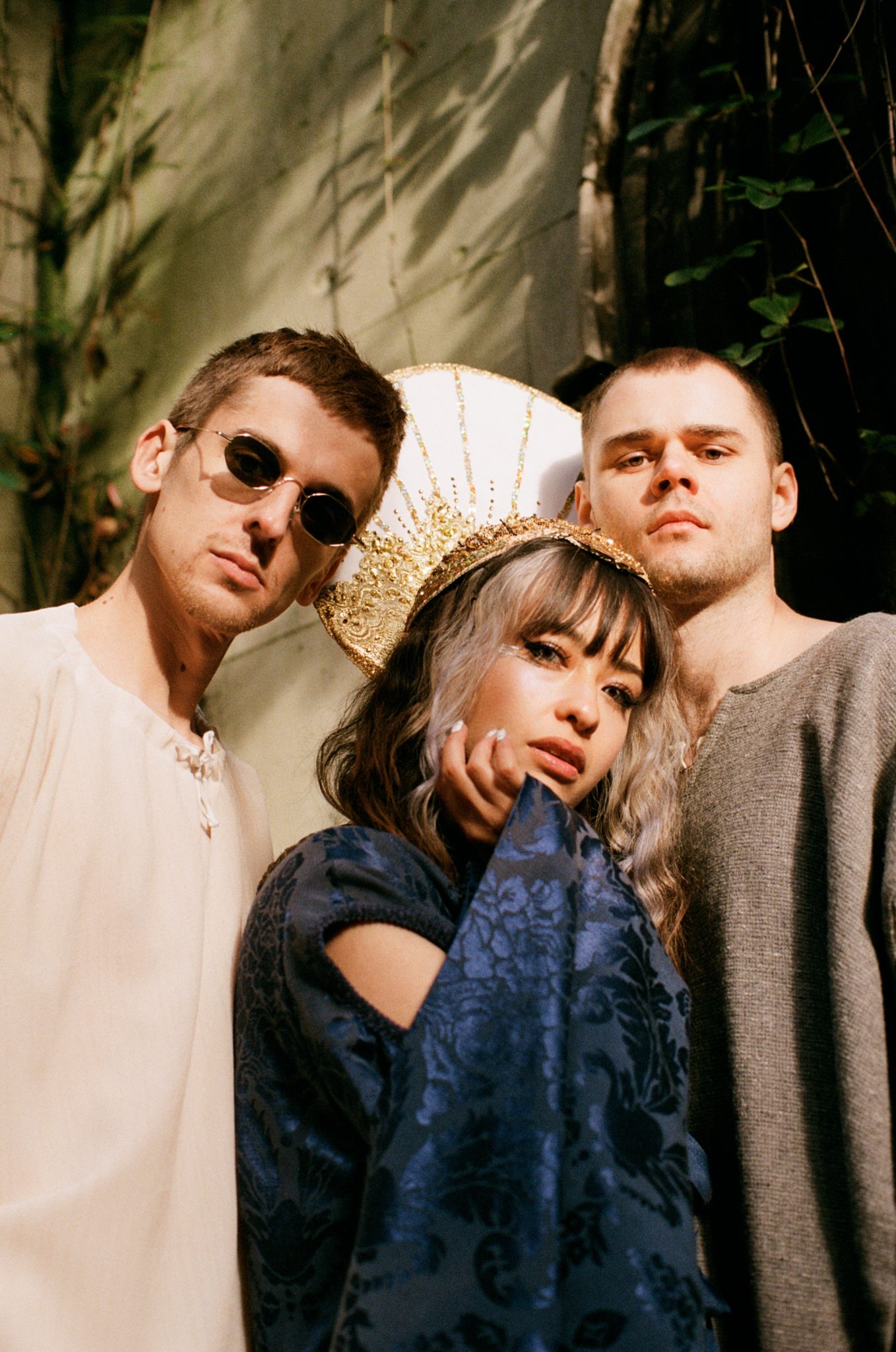Kero Kero Bonito are not a version of anything, other than themselves. Inspired by cherry-picked pieces of technology, the endless vista of the internet and a vast swathe of influences, they make music that is challenging and vital. The trio, who produce every part of their output and control their own career path, have amassed a supersized fanbase in the short time they’ve been together – for scale, 175 million streams with over half of their audience under the age of 22. The latest addition to their canon is a three track EP, Civilisation II. A sequel to 2019’s Civilisation I, Civilisation II tells self-manufactured myths, using vintage hardware only, and plays with the temporal.
They are a band who will stand the test of time. They have seamlessly morphed through alt-pop genres, from creepypasta ‘90s indie to fourth world alt-pop, aligning themselves with enlightened musical influencers such as 100 gecs, Charli XCX, Rina Sawayama and exaggerated electronic pop music cabal PC Music. These affiliations and collaborations placed the band squarely in front of an emboldened audience who were willing to dive head first into Kero Kero Bonito’s borderless and undefined pop music.
Much like Civilisation I, all three tracks of Civilisation II were produced and recorded in Gus’ bedroom, with Sarah writing lyrics as they came to her, in half Japanese, half English, reflecting the multi-dimensional way she thinks and understands language. It is inspired by early ambassadors of art-pop such as Kate Bush, David Byrne and Ryuichi Sakamoto, as well as their modern equivalent – Grimes, Caroline Polachek and Bjork, as well as trumpeter Jon Hassell, who developed the concept of ‘fourth world’ music, which unified both primitive and modern sounds.
Civilisation I and Civilisation II were produced using only old hardware which both trivialises and exaggerates the ideas that lie within the EP. Each of the EP’s three tracks are set in a different tense: past, present and future. The Princess and The Clock (past) is a fictional myth of their own devising, telling the story of a princess sailing the world who is kidnapped by a primitive society. She’s held in a glass tower where although she is worshipped, she dreams of escape. One day the captors find her gone and the glass smashed; it’s up to the listener to decide how she left. The second track, 21/04/20 (present), references a specific day in lockdown. Inspired by the way both cave drawings and the Bayeux Tapestry are very literal works of art that depict the exact experiences of a day, the band used the very traditional art school technique of capturing their own moment. The third song, Well Rested (future), is an extreme remix of Rest Stop, a track from Time ’n’ Place and the longest song they have ever produced. Alluding to the idea of resurrection, it references many of the wider conversations that are happening at the moment, mainly the ambiguity of morality around the population explosion.
Kero Kero Bonito’s ambition is to make music that they enjoy themselves. This goal sets a standard, and is a starting place to ensure that their ever expanding audience is given a good product. Because the band understands the machinations of digital culture, they have encouraged the extrapolation of their music by their fans; 2014’s Flamingo (now at half a million Shazams) and I’d Rather Sleep both became TikTok hits in the past two years and garner over a million streams per month. It’s Bugsnax!, a theme for a PS5 launch game, was heralded as “the internet’s new favourite meme ingredient” by GamesRadar. Time ‘n’ Place topped the Billboard Heatseekers chart in the USA and in 2019 they played a sold out tour of North America. More recently they’ve appeared on live stream events with A. G. Cook, 100 Gecs, Fader’s digital FORT and SPF420.
Much like the maverick artists they relish, from Prince to Paul Weller, they keep everything in house, from production to artwork, ensuring that they have control over their output. They want to be known for being unpredictable, combining rules to create fantastical new outcomes that reshape the pop culture landscape. And through escaping the humdrum of the suburbs and challenging the status quo, they have done exactly that.
